How Artist Greg Itahara Turned the Lowly Singlet Into the Coolest Canvas

“I love the Ben Johnson Sydney singlet," artist Greg Itahara says when asked about some of his favorite designs. (Photo: Greg Itahara)
At the Chicago Marathon this weekend, every competing runner will have a story for what brought them to the starting line. Some, however, will actually wear their story on their sleeve—or, rather, on their sleeveless singlet. Enter Greg Itahara, a Chicago-based artist whose hand-painted singlets have become some of the most meaningful garments in the sport.
Itahara has built an underground following for his one-of-a-kind designs, which have appeared in major marathons around the world—and have caught the eye of major brands, too, including Nike, rabbit, and Saysky. But for Itahara, it’s not about the big names or Instagram likes. It’s about storytelling.
Stories like that of Vince Ramos’ 4-year-old niece, in recovery from a battle with sarcoma, illustrate the deeply personal nature of Itahara’s work. Ramos, a Chicago-based runner and realtor, commissioned him to hand-paint a singlet for the 2025 Berlin Marathon, where he raised funds for Camp One Step, a children’s oncology foundation.
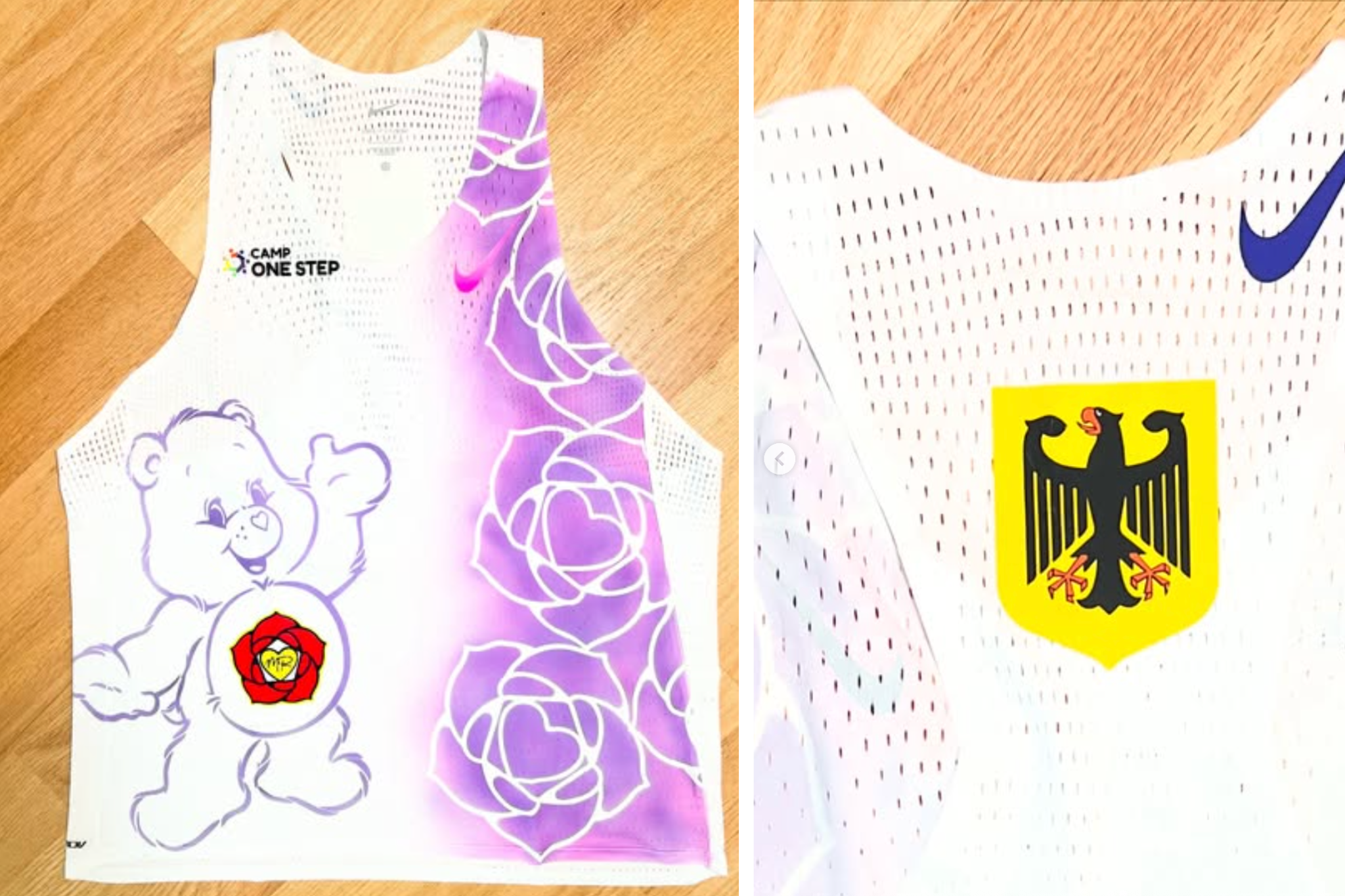
And then there’s the runner who asked Itahara to create a design reflecting her triumphs over multiple hardships—“everything from being told by multiple surgeons she would never run again, to experiencing an eating disorder relapse, to losing the most important person in her life to a motor vehicle accident,” Itahara shares.
In response, he painted an intricate phoenix, its bold, fiery colors symbolizing rebirth, strength, and resilience.
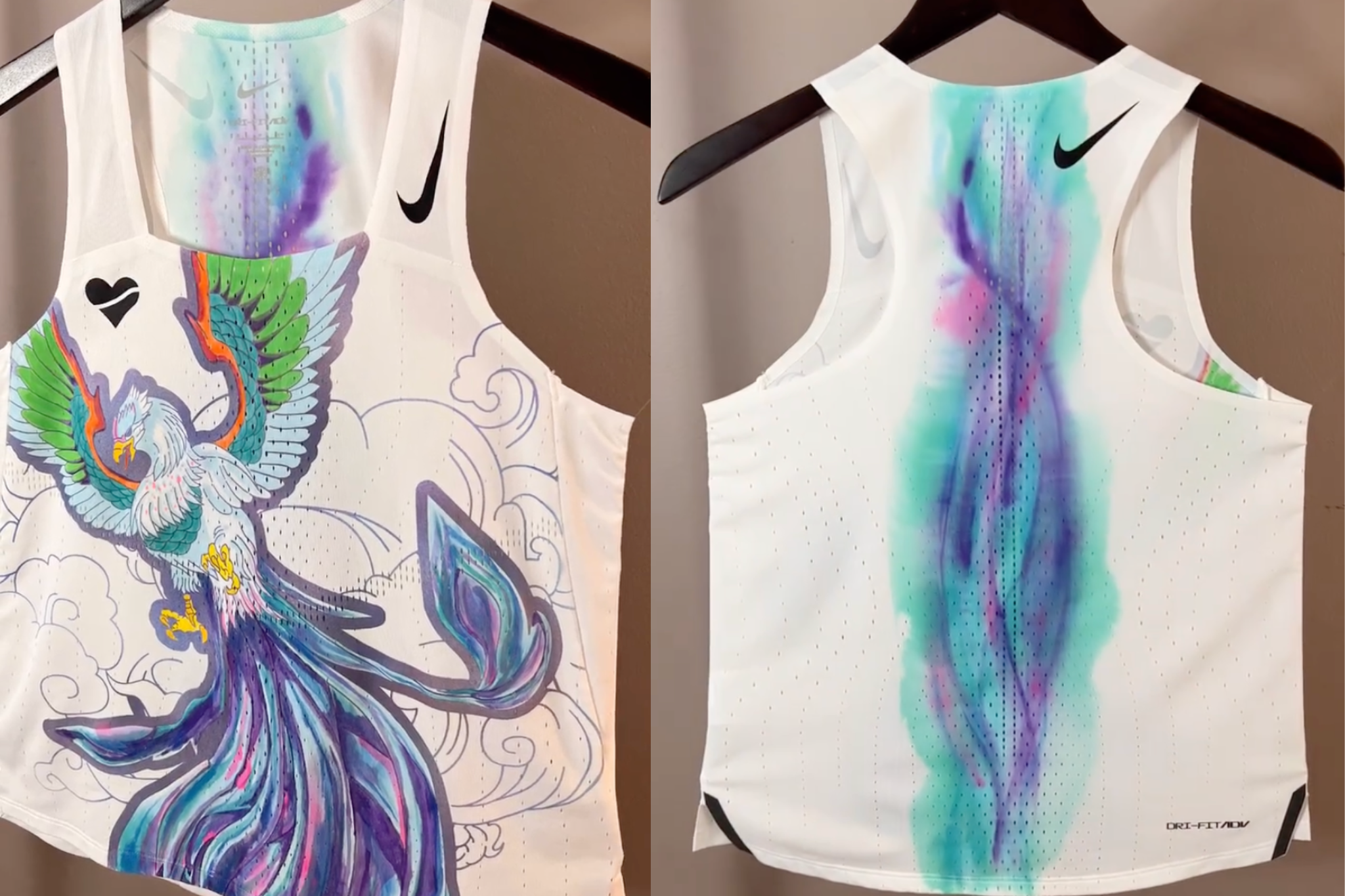
Sometimes I wonder, ‘Why is my stuff so popular?’” he says. “I think it’s because everything I design has a story. A lot of running apparel is just patterns—it looks nice, but it doesn’t mean anything. What I do is tell visual stories.
There are playful designs, too. One runner reached out about a custom design featuring the Japanese superhero Ultraman for the Tokyo Marathon. There’s a Miami Heat-inspired singlet for an NBA-loving young track star. A marathoning dad had Itahara recreate his children’s artwork on a tank, including a Pikachu and a frowning frog.
“Sometimes I wonder, ‘Why is my stuff so popular?’” he says. “I think it’s because everything I design has a story. A lot of running apparel is just patterns—it looks nice, but it doesn’t mean anything. What I do is tell visual stories.”
From Ad Man to Marathon Man
Before he became one of running’s most sought-after designers, Itahara spent two decades working in advertising at Leo Burnett, one of Chicago’s top agencies. His life was built on long nights, big pitches, and fast food. By the time he hit his 40s, burnout had taken hold.
“When my wife and I were expecting our first child, I decided to step away,” he says. “I became a stay-at-home dad doing freelance graphic design work—and that’s when I realized how unhealthy I’d become. So I started running, just to feel better.”
Over the years, Itahara completed five Chicago Marathons, along with the Disney World Marathon and the Dopey Challenge, becoming ingrained in the local running scene. That’s how he learned about a finisher-medal design contest hosted by the Chicago Area Runners Association (CARA).
“I didn’t think much of it,” he recalls. “I’m not one for popularity contests, but I figured I’d whip something up and submit it.”
Out of three submissions, his design won. The unexpected victory turned into a creative spark—soon CARA was hiring him for race bibs, medals, and T-shirt designs. Other event organizers followed suit, allowing Itahara to build a steady freelance workflow.
Going Viral
Then the pandemic hit. Races vanished overnight, along with much of Itahara’s freelance work. Seeking a creative outlet, he turned to his sneaker collection.
“I’m a sneakerhead, so I started painting shoes, then track spikes,” he recalls. “Someone eventually asked, ‘Can you paint a singlet?’ I’d never done that before, but I said sure.”
His first attempt was modest: a Nike singlet with a simple zigzag W pattern, reimagined in a fresh colorway. He posted it on Instagram, and messages flooded in from runners across the country. Running influencer Ben Johnson was one of the first “names” to request a piece, and interest snowballed from there.
As word spread, so did opportunity. Itahara began collaborating with run clubs, then retailers who began mass-producing his designs. His “Trials and Triumphs” singlet for rabbit, created for the U.S. Olympic Marathon Trials in February 2024, became the brand’s top-selling design ever.
“The retail buyer told me it was the most searched and sold singlet in rabbit’s history,” Itahara says. “That kind of feedback blows me away.”
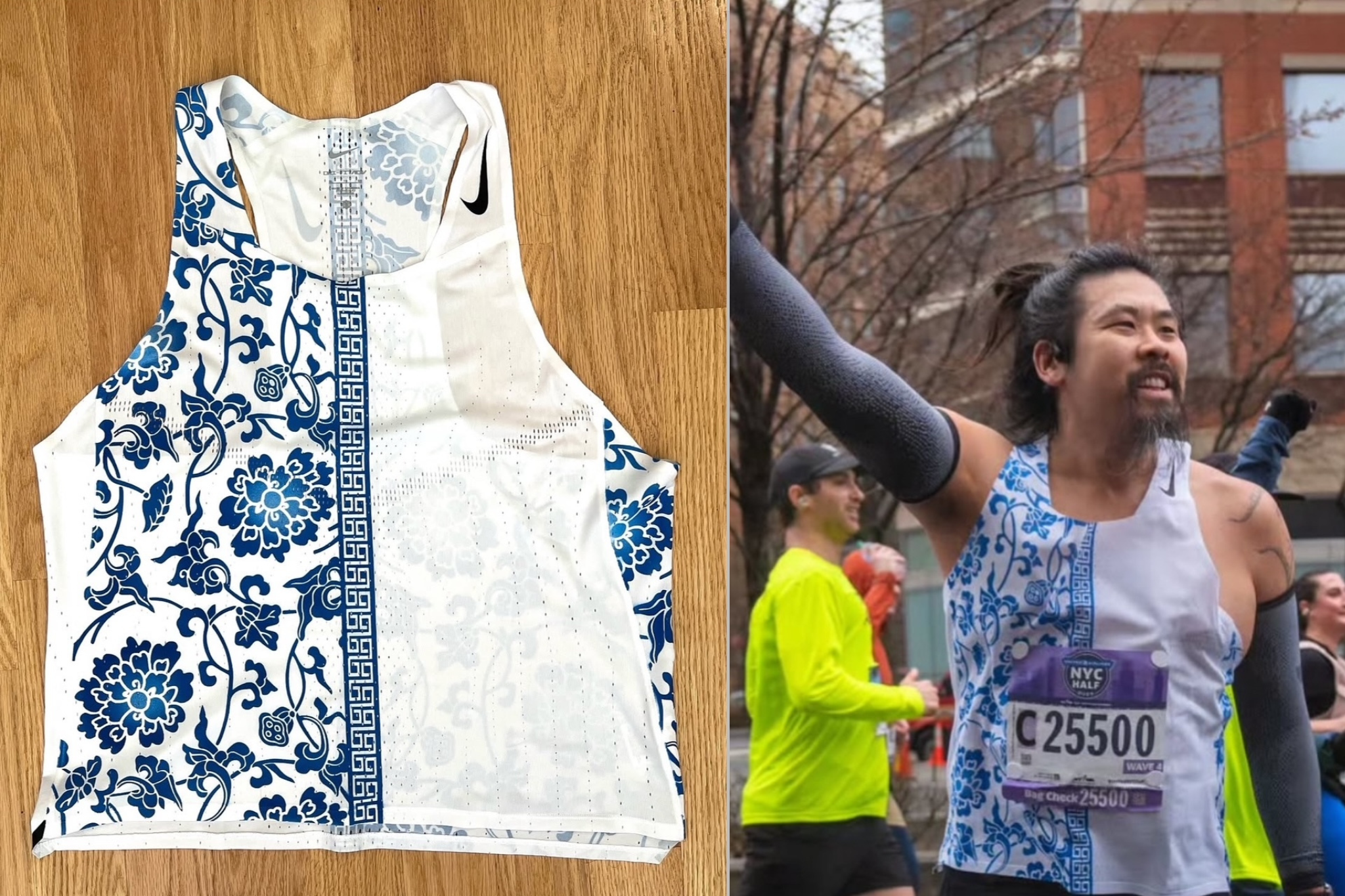
His limited-edition drop with Saysky, released exclusively in Europe, sold out in an hour and a half. For this year’s Chicago Marathon, he’s got a collab with sock brand Swiftwick, and he created the exclusive Chicago Speakeasy Capsule for rabbit. Next, he’s partnering with Sound Running on kits for the Brooks Cross Country Championships, which will soon appear on high school athletes nationwide.
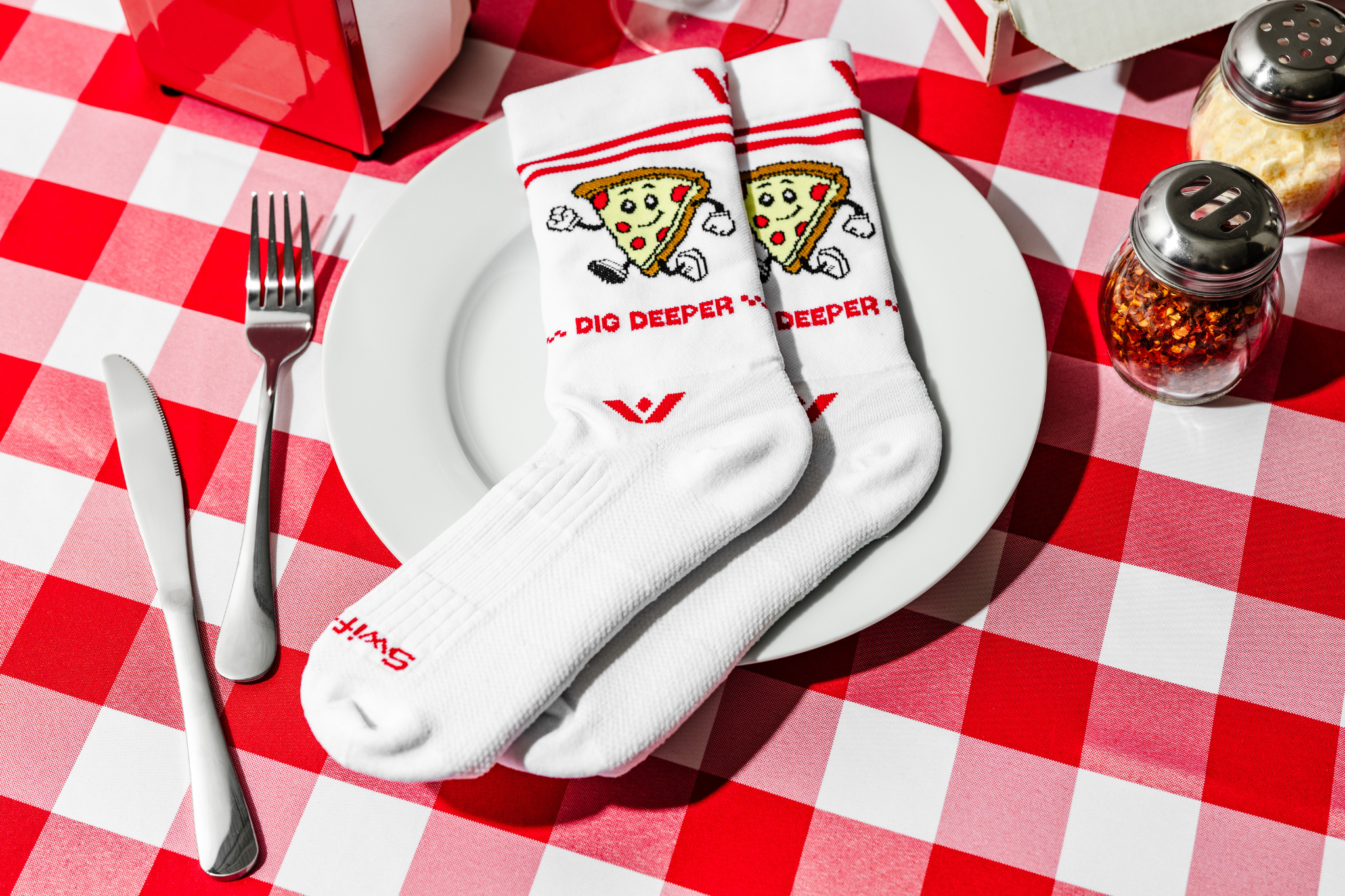
Even elite athletes have come calling. Two-time Olympian Clayton Murphy messaged Itahara on Instagram with an unusual request: custom Kobe Bryant–inspired track spikes.
“I thought it was a fake account,” Itahara admits. “But it was really him. When I sent them, he said they were too pretty to wear, so he keeps them in a display case.”
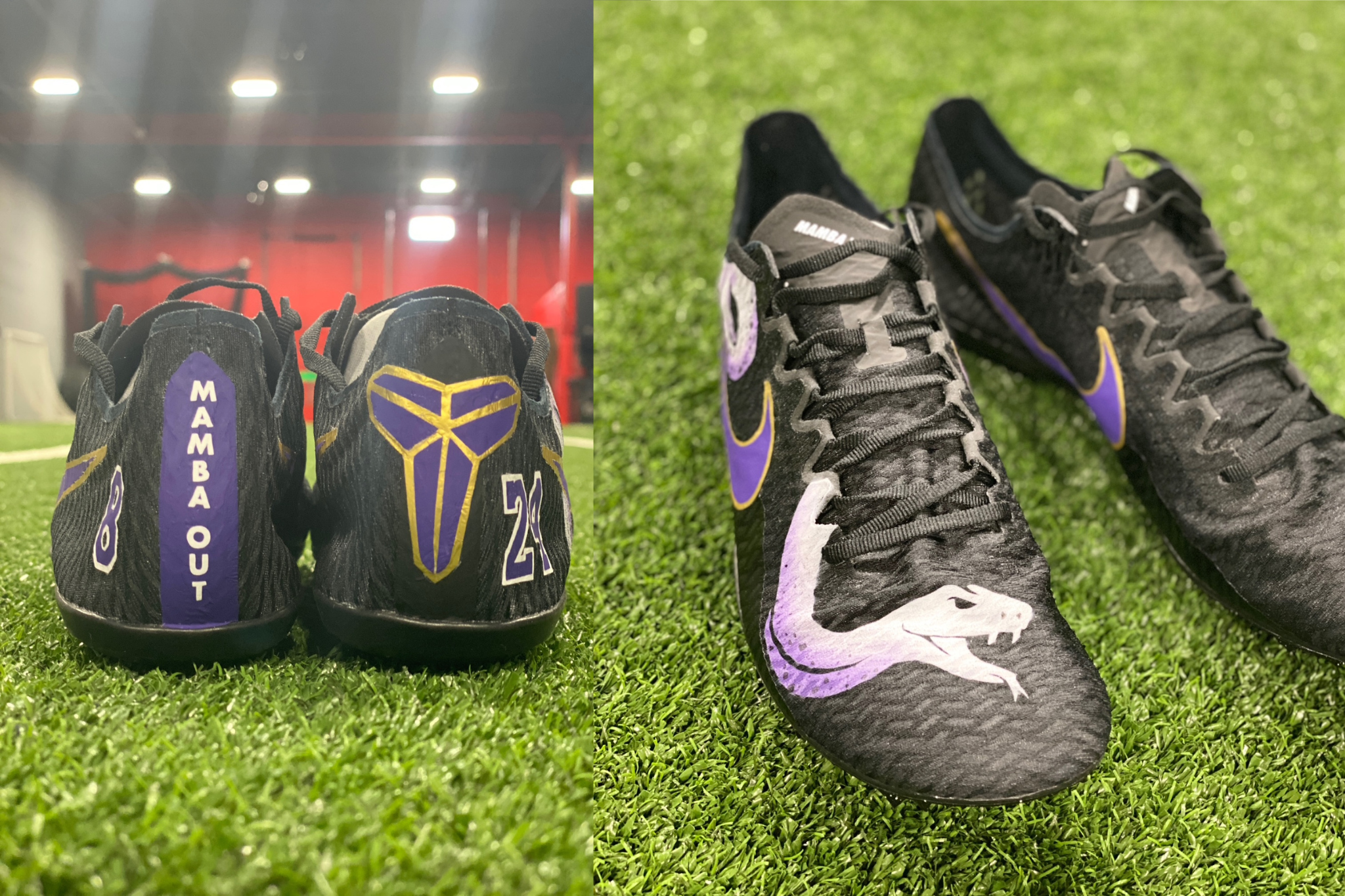
Whether it’s a one-of-a-kind hand-painted singlet or a limited-edition capsule for a major brand, Itahara says what matters most is the meaning behind each piece.
“I love storytelling,” he explains. “Each piece has a story behind it—it’s sentimental and a connection to their memories. Allowing others to share their story out on the course in such a visual way keeps me inspired.”